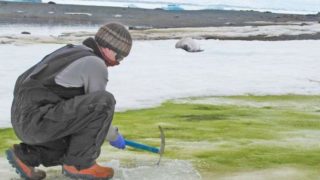
MI weekly selection #385
Deep-sea fish stay hidden thanks to ultrablack skin At least 16 species of deep-sea fish have been discovered so far with ultrablack colouring that helps them stay hidden in dark water. The ultrablack color reflects less than 0.5% of light and pigment cells are packed tightly together with little or no gaps. ScienceAlert Campfire-like flares […]








